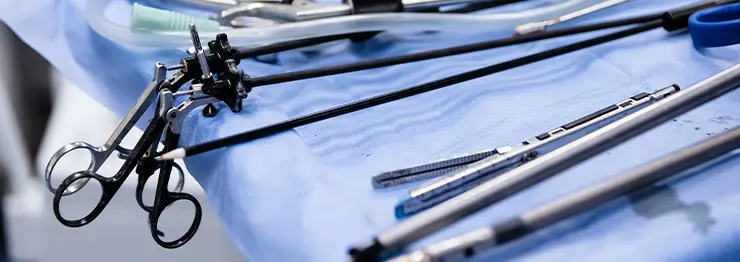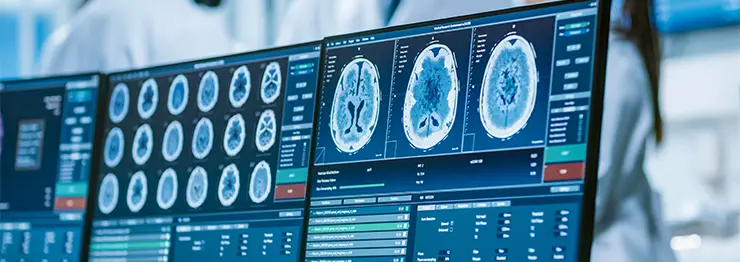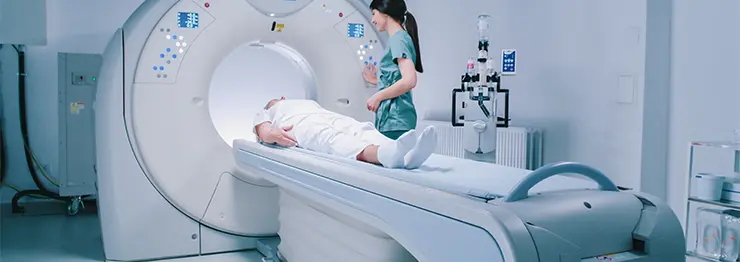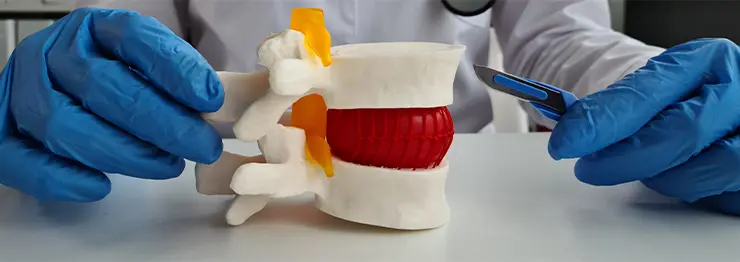Endoscopic neurosurgery
Neuronavigation guided surgeries
Stereotactic procedures
Disc replacement surgeries
Microvascular neurosurgery
Spinal instrumentation

Endoscopic brain surgery is a minimally invasive brain surgery that can identify and treat conditions that are deep within the brain like deep-rooted brain tumours. It involves using an endoscope, a tube-like instrument that has a small camera attached at one end. This endoscope is inserted through small incisions in the skull. Via the endoscope, the neurosurgeon can see detailed images of the problem areas in the brain and accordingly perform the necessary surgery.

During neuronavigation guided surgery, surgeons utilise computers and medical imaging to gain a clear view of the brain during complex operations. They obtain detailed pictures of the patient's brain beforehand and upload them to a computer system. As the surgery progresses, cameras track the surgical tools to the brain images displayed on the computer screen. This tracking system provides surgeons with real-time visuals, guiding them to operate with precision and safety around important brain areas.

Stereotactic procedures in neurosurgery use a precise 3D mapping system to target small areas in the brain or skull. Before surgery, imaging scans create a detailed map of the patient's brain. During the procedure, this virtual map guides surgical tools and treatments like radiation beams or electrodes to the exact problem area, without damaging surrounding healthy tissues. This highly focused approach allows the treatment of conditions like tumours, seizures, or movement disorders.

Old age or medical injuries can cause the disc between the vertebrae to either dislocate or erode. In disc replacement surgeries, the surgeon removes the problematic disc and replaces it with an artificial disc made from medical-grade materials like polyethylene, cobalt chromium, or titanium alloy. This artificial disc helps restore height between vertebrae and allows normal flexibility and movement.

At Manipal Hospitals, we also perform microvascular neurosurgery which involves operating on microscopic blood vessels in the brain. Surgeons use specialised tools and high-powered microscopes to treat conditions like brain aneurysms or blocked vessels. They carefully repair or reroute the tiny vessels that are just a few millimetres in size.

In spinal instrumentation surgery, neurosurgeons use medical hardware like screws, rods, plates, or cages to stabilise and support the spine. During surgery, these instruments are strategically placed along the vertebrae to reinforce the spine's structure and alignment. This hardware acts like an internal brace, facilitating healing and fusion between vertebral bones. This surgery is usually done after spinal injuries, deformities, or degeneration to restore stability and relieve pain.
Endoscopic neurosurgery

Endoscopic brain surgery is a minimally invasive brain surgery that can identify and treat conditions that are deep within the brain like deep-rooted brain tumours. It involves using an endoscope, a tube-like instrument that has a small camera attached at one end. This endoscope is inserted through small incisions in the skull. Via the endoscope, the neurosurgeon can see detailed images of the problem areas in the brain and accordingly perform the necessary surgery.
Neuronavigation guided surgeries

During neuronavigation guided surgery, surgeons utilise computers and medical imaging to gain a clear view of the brain during complex operations. They obtain detailed pictures of the patient's brain beforehand and upload them to a computer system. As the surgery progresses, cameras track the surgical tools to the brain images displayed on the computer screen. This tracking system provides surgeons with real-time visuals, guiding them to operate with precision and safety around important brain areas.
Stereotactic procedures

Stereotactic procedures in neurosurgery use a precise 3D mapping system to target small areas in the brain or skull. Before surgery, imaging scans create a detailed map of the patient's brain. During the procedure, this virtual map guides surgical tools and treatments like radiation beams or electrodes to the exact problem area, without damaging surrounding healthy tissues. This highly focused approach allows the treatment of conditions like tumours, seizures, or movement disorders.
Disc replacement surgeries

Old age or medical injuries can cause the disc between the vertebrae to either dislocate or erode. In disc replacement surgeries, the surgeon removes the problematic disc and replaces it with an artificial disc made from medical-grade materials like polyethylene, cobalt chromium, or titanium alloy. This artificial disc helps restore height between vertebrae and allows normal flexibility and movement.
Microvascular neurosurgery

At Manipal Hospitals, we also perform microvascular neurosurgery which involves operating on microscopic blood vessels in the brain. Surgeons use specialised tools and high-powered microscopes to treat conditions like brain aneurysms or blocked vessels. They carefully repair or reroute the tiny vessels that are just a few millimetres in size.
Spinal instrumentation

In spinal instrumentation surgery, neurosurgeons use medical hardware like screws, rods, plates, or cages to stabilise and support the spine. During surgery, these instruments are strategically placed along the vertebrae to reinforce the spine's structure and alignment. This hardware acts like an internal brace, facilitating healing and fusion between vertebral bones. This surgery is usually done after spinal injuries, deformities, or degeneration to restore stability and relieve pain.
Top specialists. Advanced technology. Exceptional healthcare.
